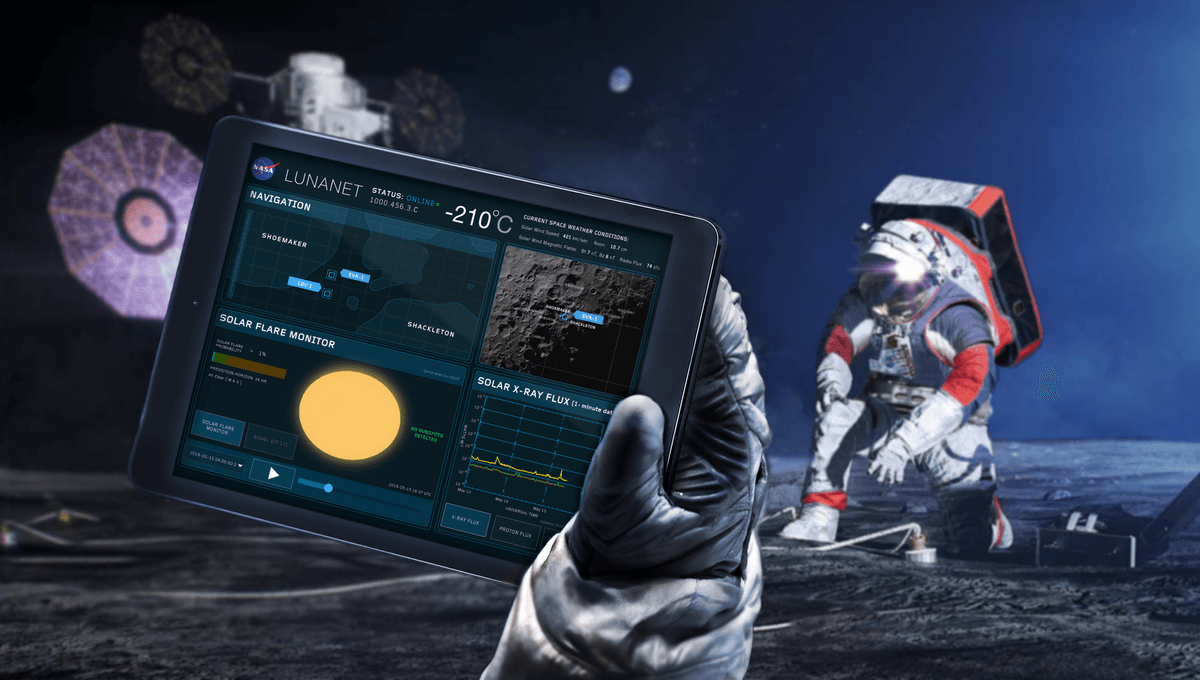
NASA has successfully tested a positioning system on the Moon that will allow for the safer navigation of rovers and humans on the lunar surface. The test, conducted in February, was part of Intuitive Machine’s Odysseus mission. Called Lunar Node 1 (LN-1), the beacon was turned on for 30 total minutes and showcased how it can be used to find where one is on the surface.
LN-1 verifies the position of individuals with other sources in the network such as spacecraft in orbits, ground stations, or even other individuals. The system conducted two 15-minute transmissions and the signal was successfully locked to NASA’s Deep Space Network. The team was able to receive telemetry and navigation measurements from it.
“We’ve lit a temporary beacon on the lunar shore,” Evan Anzalone, LN-1 principal investigator at NASA’s Marshall Space Flight Center, said in a statement. “Now, we seek to deliver a sustainable local network – a series of lighthouses that point the way for spacecraft and ground crews to safely, confidently spread out and explore.”
Odysseus had some trouble landing, as it reached the surface at a funny angle. This led to cutting down the originally planned time for testing LN-1 from 10 hours a day across the whole mission to just 30 minutes in total. Still, LN-1 actually provided critical backup for the mission onboard navigation system, showing that this tech is up to the task.
The team envisions a network of lunar nodes that can monitor the “traffic” around and on the Moon. Together with systems like the Vikram retroreflector tested last year, and other initiatives from NASA and other agencies, the system will become part of a larger LunaNet.
And this tech might, in the future, be key to the exploration of Mars. The Moon is about one light-second away; if the position comes exclusively from Earth, signals to and from take just a couple of seconds to reach astronauts that need navigation. On Mars, we’d be looking at 20 minutes of delays, on average.
“That’s a very long time to wait for a spacecraft pilot making a precision orbital adjustment, or humans traversing uncharted Martian landscapes,” Anzalone said. “LN-1 can make lighthouse beacons of every explorer, vehicle, temporary or long-term camp, and site of interest we send to the Moon and to Mars.”
Let’s look forward to more tests of these systems, hopefully with some humans involved in the future Artemis missions.
Source Link: A “Lunar Lighthouse”? For 30 Minutes, NASA Lit Up A Beacon On The Moon